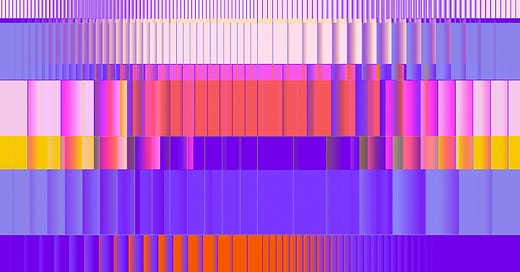The Mantra of This AI Age: Don't Repeat Yourself
The DRY principle-Don't Repeat Yourself-holds more power now than ever before.
In the rapidly evolving world of AI, one software principle from the 90s has emerged as a surprisingly relevant guiding light for modern product development.
The DRY principle-Don't Repeat Yourself-holds more power now than ever before. It's not just about clean code anymore; it's becoming the backbone of efficient AI systems and product strategies.
What is DRY and Why Does it Matter Now?
The DRY principle, coined by Andy Hunt and Dave Thomas in their 1999 book "The Pragmatic Programmer," states that "every piece of knowledge must have a single, unambiguous, authoritative representation within a system". Originally aimed at reducing code duplication, this principle has evolved far beyond its programming roots.
In today's AI-driven landscape, DRY takes on new significance. When we're dealing with machine learning models that train on vast datasets and complex algorithms, redundancy doesn't just waste development time-it can significantly impact product performance, model accuracy, and ultimately, business outcomes.
DRY in AI Product Development
For AI products, the principle extends beyond code to encompass data, processes, and even knowledge management.
When building AI systems, redundancy in training data can lead to biased models, while duplicate processes can waste computational resources that are already at a premium.
As an AI Product Manager, applying DRY means ensuring that:
Your data pipeline eliminates redundancies - Data is the lifeblood of AI systems, and duplicate or inconsistent data sources can lead to conflicting signals in your models7. Creating a single source of truth for your data assets is paramount.
Your model architecture avoids unnecessary complexity - Just as in traditional software, abstractions in AI models should solve actual problems rather than anticipated ones. As the "Rule of Three" suggests, wait until you see a pattern three times before abstracting it.
Your product workflows reduce repetitive human input - The most powerful AI tools automate tedious tasks while preserving meaningful human intervention. This is DRY applied at the user experience level.
Practical Examples in Action
Consider a recommendation engine that pulls user preference data from multiple touchpoints. A DRY approach would create a unified user profile service that all recommendation algorithms reference, rather than implementing separate profiling logic in each feature.
Or think about prompt engineering for generative AI. Instead of having each team member craft similar prompts to get consistent outputs, a DRY approach would create a library of standardized prompts that ensure consistency while reducing redundant effort.
Even in AI model deployment, the DRY principle suggests building reusable components for common tasks like data preprocessing or evaluation rather than reimplementing these for each new model.
Finding Balance: When to Stay Wet
Interestingly, blindly following DRY can lead to problems too. There's a counter-principle called AHA (Avoid Hasty Abstractions) that warns against premature optimization.
Sometimes, allowing some duplication is better than creating the wrong abstraction that's difficult to modify later.
The key is understanding when DRY adds value and when it might constrain innovation-especially in rapidly evolving AI projects where requirements frequently change.
The Bottom Line
In this AI age, DRY isn't just a programming principle-it's a strategic approach to building sustainable, scalable AI products. By eliminating redundancy in your data, code, processes, and even organizational knowledge, you can create AI systems that are more maintainable, accurate, and ultimately more valuable to users.
Next time you're planning an AI feature or product, ask yourself:
"Am I repeating something that should have a single, authoritative representation?"
The answer might just be the difference between a cumbersome system and an elegant solution.
Until next week,
Samet Özkale
Citations:
https://dev.to/ralphcone/please-do-repeat-yourself-dry-is-dead-1jbg
https://www.barnesandnoble.com/w/pragmatic-programmer-andrew-hunt/1100504314
https://www.reddit.com/r/programming/comments/xn14lx/why_dry_is_the_most_overrated_programming/
https://www.digitalocean.com/community/tutorials/what-is-dry-development
https://www.plutora.com/blog/understanding-the-dry-dont-repeat-yourself-principle




